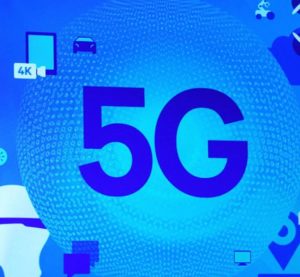5G Wireless has been successfully launched at the 2018 Winter Olympics in Pyeonchang and soon it will be in Atlanta.
2018 will be the year you can experience mobile 5G from AT&T. The plan is to offer mobile 5G to customers in a dozen cities, including parts of Dallas, Atlanta and Waco, Texas, by the end of this year. Additional cities will also be announced.
This is standards-based, mobile 5G we all can use. AT&T is the only U.S. carrier that’s announced plans to deliver this ground-breaking technology to its customers in 2018.
“We’re working on an aggressive schedule to help ensure customers can enjoy mobile 5G when we launch the network this year. We will add more 5G capable mobile devices and smartphones in early 2019 and beyond.”
There has been a series of tests to get to this point.
“After significantly contributing to the first phase of 5G standards, conducting multi-city trials, and literally transforming our network for the future, we’re planning to be the first carrier to deliver standards-based mobile 5G – and do it much sooner than most people thought possible,” said Igal Elbaz, senior vice president, Wireless Network Architecture and Design. “Our mobile 5G firsts will put our customers in the middle of it all.”
How we’re doing this”
AT&T continues to build the foundation of 5G. They initially launched 5G Evolution last spring and plan to offer this technology broadly by the end of the year. Additionally, last fall AT&T launched LTE-Licensed Assisted Access (LTE-LAA) technologies in parts of Indianapolis and are now live in parts of Chicago, Los Angeles and San Francisco.
“Our initial mobile 5G deployments this year will be based on 3GPP standards and operate over mmWave spectrum. We will use mmWave to provide mobile 5G in some areas, and then we will deploy the technology on additional spectrum bands.”
The way they are implementing 5G in the initial deployments will also seamlessly integrate with current LTE technologies using the non-standalone configuration outlined in 3GPP release 15. The equipment they are deploying today on a LTE network will allow us to easily migrate to 5G.
A virtualized and software-defined network lets you develop, deploy, and protect new network applications faster than with a hardware-based model.
AT&T plans to virtualize 75% of their network by 2020. The goal in 2017 was 55%, and they hit that mark.
“The experience we’ve gained by leading the industry transformation to network virtualization and software control will help our customers to get the most out of 5G.”
In order for these experiences to become reality, you need mobile 5G powered by SDN and edge computing. We’re making the cloud smarter, faster, and local.
The learnings from extensive 5G real-world trials will drive the commercial deployments this year.
“We started conducting 5G field trials with mmWave in mid-2016 and tested 5G service with residential customers, small and large businesses, and high-traffic retail locations. We’re committed to learning how 5G technologies can help transform businesses. The real-world applications of these technologies could open up new opportunities for businesses across all industries to drive outcomes and engage with customers in exciting new ways.”




